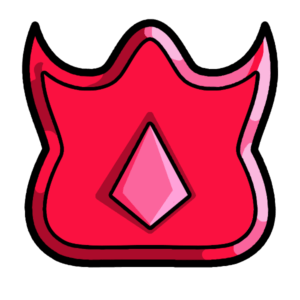February 2019 Wrapup!
Oh Mercy Me, we’re all outta February!
I Like: Now Kiss
This February we’ve spent a lot of time looking at Visual Novels. You might have wondered why I didn’t, given how easy the kind of content is, do a let’s play of one of them. Well, the short answer is that I can’t get Renpy games and my recording software OBS to look at each other, but the longer answer is why would I do something so unnecessary when there’s the excellent Now Kiss! to follow instead!
Now Kiss! is a streaming show over on the mighty Loading Ready Run streaming network, in which Kathleen DeVere, renowned goth and misanthrope plays her way through visual-novel style games and dating sims, looking for waifus and husbandos and whatever she can.
This is very long form stuff – we’re talking about reading out each line at a time, and giving characters voice, and commentating on the games as they play. I don’t normally like this format, but this format’s length makes it good passive material while you’re doing other things, like household chores. It’s also good, though, because these people in this stream love this genre, but are not uncritical of it.
It’s good stuff, check it out.
Smoochin’ Algorithm Blues
This isn’t the kind of thing I wanted to do for Smooch Month, but I figure it’d be just a kind of lie if I wasn’t willing to admit it. Finding stuff to Story Pile for Smooch Month has been really hard.
Normally when I approach a topic it’s easy enough to start because I want to talk about things I find interesting. That means I have things already in mind for interest. If I wanted to talk about overrated RPGs, for example, I’d think ‘are there any games I think are bad but are critically acclaimed, oh, TWEWY, FFT and Undertale and that’s most of a month’s content done right there, no problem.’ When it comes to Smooch month though, I explicitly wanted to get out of my comfort zone.
Part of why is because I don’t watch a lot of smoochy media, because it mostly makes me unhappy, or reminds me of being unhappy. There was a time in my life, I, no joke, seriously sat on the verge of tears because of an anime opening theme subtitle, and the series it was from was DearS, which, if you don’t know it, good. It’s bad. Don’t watch it. It’s real real bad. Avoid it. Anyway, the point is, the times in my life when ‘romantic’ media hit me the hardest were some supremely messed up times, and that meant I responded to some dreadful garbage, movies that today I think of as actively bad, things that spoke to a person I’m not any more, and am supremely grateful that I’m not.

That meant that I’m both starting pretty fresh and, since ‘boy grouses about genre he doesn’t like’ is supremely dull, I wanted to take the chance to watch some Smooch Media that I could both talk about and maybe connect people to their new favourite thing but also broaden my tastes and horizons.
First I asked friends. I got some good suggestions, but not things I could use – Australian Netflix and Stan, after all. I wanted to avoid anything that needed shipping to make it good – so the Tangled series was right out, even though I like it a lot. I wanted to avoid movies that treated their audience like they were stupid, which meant a lot of rom-coms I knew were gone (Sarah Michelle Gellar has starred in some bunk). I also didn’t want to just watch action movies that had a romance in them, because it felt like cheating. No. This was about Smooch Media! That’s when I started looking at lists online, google searching ‘good romantic movies,’ and, well, that’s when I ran into the maw of the algorithm.
Did you know Kristen Stewart’s done a Tragic Lesbians Movie About Theatre? I did. It’s called Clouds of Sils Maria. Not going to talk about it here, it’s depressing as hell and is really more about the transient nature of fame and the disposable vision of women. How about Snow White And the Huntsman? Well, that’s an action film, and it’s really bad too, which is maddening because how hard can it be to make Snow White not garbage? Also didn’t write about Blue is the Warmest Colour because it’s really steamy and gay and that makes me really uncomfortable and exploitative. I read all of My Dragon Girlfriend, too which is also super steamy and gay, and that made me feel even more intrusive because it wasn’t a multimillion dollar international production. Mixed in amongst all these movies and series, though, there were all these things that the Algorithm thought I’d like, things like thrillers and horror movies and suspense movies which were all masquerading as Smooch movies, with the general message of Maybe Don’t.
This subject has been really hard to cover! And part of that is that when you ask the internet about ‘romantic media’ you get ten thousand answers that aren’t very helpful.
Story Pile: My Dragon Girlfriend
First up, a link! This is a bit of a different Story Pile than normal, because the work in question is available free on the web. Normally, I break up my writing on a series or movie with screencaps, which I happily do under the idea of fair use (for commentary purpose). In this case, though it feels a little more close to the wire; that work is Patreon sponsored, after all, and it’s – it’s just there. It’s there, you can go read it, it’s free.
I could just approach Fawnduu to ask her permission to use her pictures for this blog review, but that would necessarily draw her attention to it, which is bad, and brings with it the hypothetical conception that she should care about what I have to say about her comic, which is also bad.
With that in mind, I’m not going to use pictures from the work to break up this review, beyond this one isolated screencap of Danni’s doofy dragon grin. This work is extremely low stakes (so far?) and therefore I might spoil some stuff in order to talk about it, but don’t worry. This isn’t a series about dramatic twists, so far.
This is a series about lesbians, and dragons, and lesbian dragons.

MTG: Bottoming And Topping For Amateurs
WOTC Employees: This article includes unsolicited game designs. Here’s an owl so it doesn’t show up on the twitter preview.
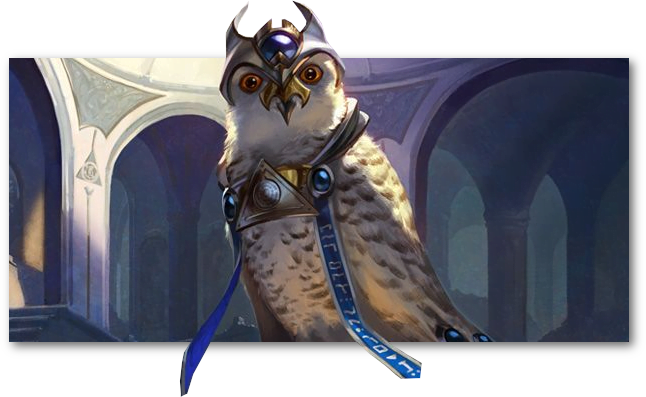
February Shirt: Shippin Lovin Smoochin
This month I wanted to celebrate smooching. I didn’t talk much about fandom and shipping, though, and that’s kind of a bummer. I did some other designs about specific ships, a bit of snarky references to things that weren’t very smoochy, and generally got meanspirited. I instead decided to rededicate my design to something that was very pure, very sweet, and very nice looking, and what resulted is a festival of pink and pastel.
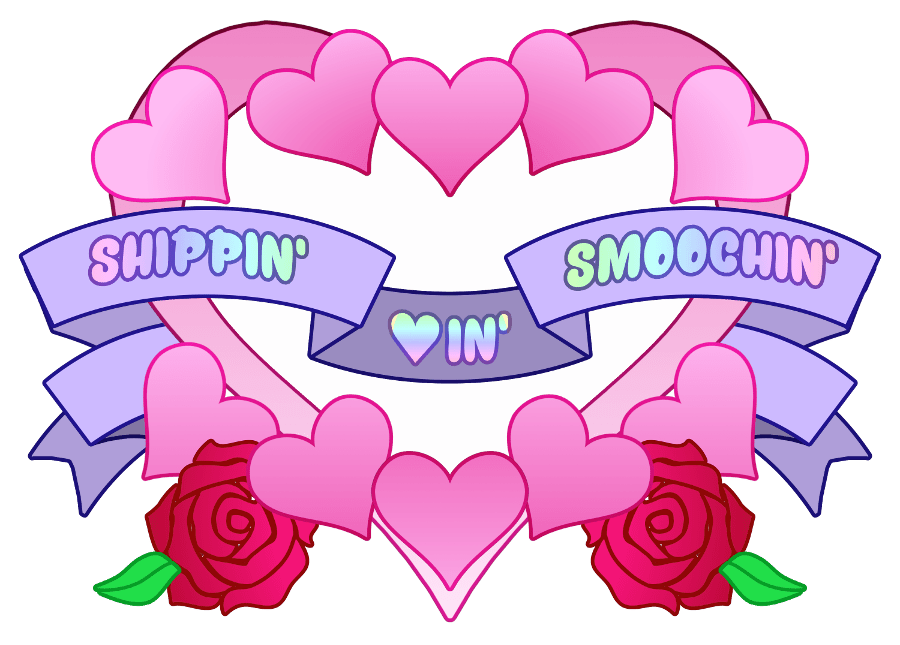
And here the design is on our friendly gormless supposedly unisex Redbubble model:
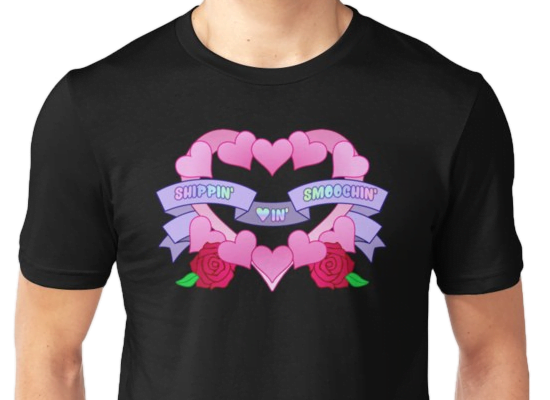
And here’s the design being modelled by the Teepublic ghost: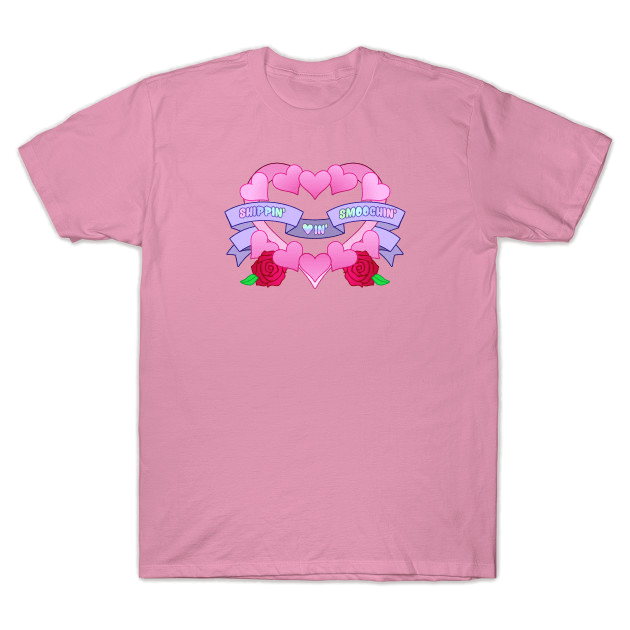
This design is available on a host of shirts and styles. If you like the look, I can see about making the individual badges into stickers.
Game Pile: Love Is Strange
4th Edition’s Space Problem
Normally you’ll hear me be pretty positive about 4th Edition D&D. I’m a strident defender of the game, which is made easiest by a number of the complaints about the game being entirely fake. It’s easy to be a righteous defender of something against blatant lies.
Still, there are flaws with 4th Edition D&D, which shouldn’t be any kind of surprise and yet here we are. Let’s talk about one of them. Heck, let’s talk about a big problem, and it’s a problem that’s structural. It’s so structural it doesn’t even relate to a specific class, as much as it relates to the way that classes get made.
Classes take up too much space.
Accent Bullshit
I’m a bit sore about accents.
One of the problems is that my accent is one of those ones that’s kind of definitively seen as a joke. You don’t hear an Australian accent, and when you do hear it, it is almost never done by an actual Australian. The most famous Australian actor in the world right now puts on an Olde English accent most of the time.
In part this conversation was spurred by Olly of PhilosophyTube, who is a perfectly fine chap and I don’t mean any disrepect by, but he recently did a video that was presented as a riff on ‘How I’d Fix [Franchise]’ videos, during which he did the whole thing in a very artificial American accent.
The purpose behind it was that this voice was both meant to be playing a character, and to help hook people into a way of viewing ‘the housing market’ as a thing that doesn’t actually do what it’s presented as doing. Plus it played within an existing Youtube genre of extremely tired, annoying fanfiction that’s just jam-packed full of extremely ordinary white guys. It was affect, right? That was the point. It wasn’t meant to sound good, so what’s the point?
The point is that the overwhelming thought I had, through the whole video, was not ‘Oh hey, clever use of the genre’ or ‘good point there, Olly me old chum, maybe we should eat the rich,’ but rather the much more constant ‘jesus christ this accent sucks.’
Which isn’t new, he’s done this before. He’s impersonated an Australian accent, For Hilarious Effect, which touches on one of my raw nerves.
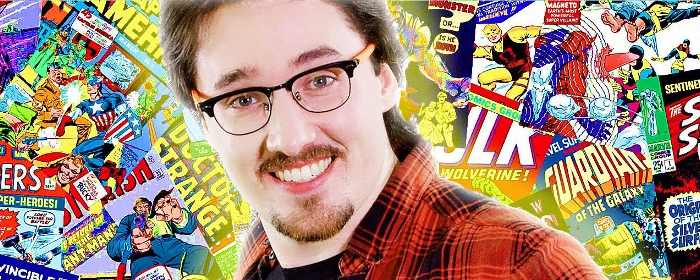
I have some sympathy for voice actors on this front. After all, in the United States, the most common form of voice acting is the way that almost all news presenters adopt an identical locational affect – it’s really specific in fact. Numerous voice actors take on roles that aren’t true to their own backgrounds, and voice acting can be much more about projecting an affect that can communicate a lot through a very small amount of experience.
Plus, I don’t want to stand here and talk about this like it’s a form of cultural intrusion. That’s a much more chancy sphere, and the last thing the world needs is a white guy standing here telling other people how they should communicate. That’s super obnoxious (and part of why it angers me when Americans do it to me).
If you want to look at the way this sphere of media is fraught, in Downsizing there’s Hong Chau’s character Ngoc Lan Tran. Tran spoke in that movie with a really heavy Vietnamese accent and broken English – an accent she said she derived from her own family.It was something of a hot topic for people to complain about this accent and even flat-out call it racist, for her to have it. I’m not here to defend the movie or how the movie depicted it, but people were saying that the accent Hong Chau chose that evoked her own Vietnamese heritage was ‘wrong,’ and made her sound like a joke. People criticised the accent, and then they asked her about where she got it from.
That’s part of the problem with this sort of cultural imperialism: You’re made to feel your own voice is inherently non-serious. That you’re not a person, you’re a comedy prop.
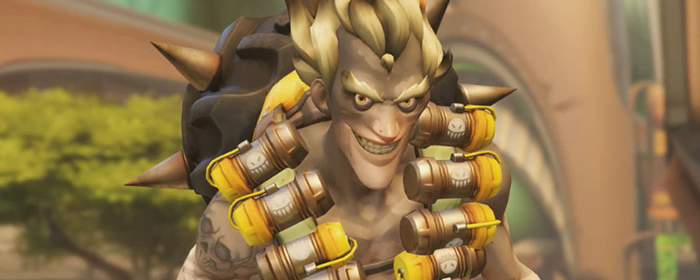 You know we were going to get to this.
You know we were going to get to this.
I hate Junkrat. I hate that Junkrat is meant to be Australian. I hate that he’s voiced by a Californian. I hate that other Australians love him. I hate how Overwatch treats Australia, because, boy howdy, is that some extremely racist stuff. But even if I didn’t hate all that, even if I didn’t hate who Junkrat is meant to be and what Junkrat is meant to be about, his accent would still suck.
And that means whenever I hear Junkrat talk, I don’t hear an Australian accent or a New Zealand accent. I hear an American, projecting to other Americans, an accent that’s meant to be about my part of the world. And all that time means every time I hear Junkrat talk, I’m pulled out of whatever fiction he’s meant to represent and just reminded that, oh yeah, this voice.
I personally feel that an accent is one of those things where we forgive you if you’re good enough. If I can’t tell your accent is fake, then it doesn’t matter that it’s fake. It’s basically diegetic, and that’s pretty interesting and weird.
Also, Olly’s like, on Patreon and Blizzard are one of the highest-paid gaming companies in the world. That’s a factor too.
Smooching Boys In Moon Light Moon Knight
There really is no better time than now, here in Smooch Month, to talk about something I made that is meant to be Smooch Media. If I’m going to stand here and talk about smooching and media about smooching, and characters I want to see smooching it seems a bit hypocritical of me to act like I’m outside this space and can make big, sweeping impartial statements.
Because I, dear reader, have made smooch media. Most of it, you don’t know about. But for now, let’s talk about a specific piece of smooch media I co-wrote, and let’s talk about the smoochy part of it I have the most opinion on: the boy.
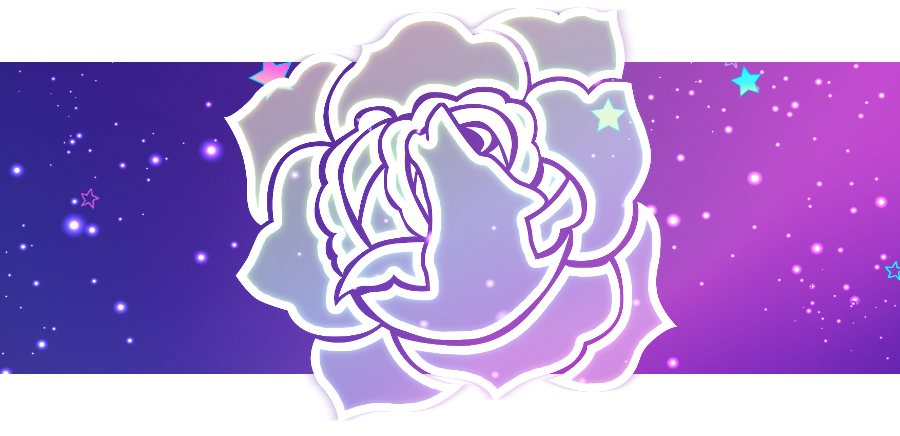
In 2018, as part of Light Novelber, I wrote, with Caelyn Sandel, a short (50~ pages) light-novel style story called Moon Light, Moon Knight. This short story is about a trans magical girl who heals monsters made up of broken sadness with a shotgun of silver, and her werewolf boyfriend.
We wrote this novel in a very direct way; we blocked out a few story ideas, then just put together a really rudimentary story structure (meet, develop, resolve), and filled in scenes with characters talking to each other. Sometimes we back-and-forthed individual scenes, sometimes we did longer form passages of worldbuilding solo. There were revisions and there were notes. We’re both very experienced storytellers, so none of what we did was, to us, hard. Maybe I’ll tell more about the process of how bits of the book got made some other time.
But.
Story Pile: Today’s Special
Buckle up we’re getting straight into it.
Spoilers ahead.
Trust me, this is not the kind of movie where spoilers matter.
MGP – The Mistake Of Chin Music
Starting January 2016, I made a game or more a month for the whole year. I continued this until 2018, creating a corpus of 39 card or board games, including Looking For Group, Senpai Notice Me, and Dog Bear. Starting in 2019, I wanted to write about this experience, and advice I gained from doing it for you. Articles about the MGP are about that experience, the Monthly Game Project.
When I made Chin Music, there were three basic things coming together. First, the idea was to try and make a game that wanted to be played quickly, but wasn’t real time. Real time rules can be challenging to make work, but the purpose of real-time play is usually some degree of tension. The idea that came together was of a game that evoked a fight, and which I could produce quickly and easily without calling on an artist.
Now, I want to make it clear if you think I’m rubbishing Chin Music. I love Chin Music. It’s one of my favourite games I’ve made. I like how it looks and I like how it plays. But there are two Chin Musics – a beta model that was printed, and a proper version that you can buy now.
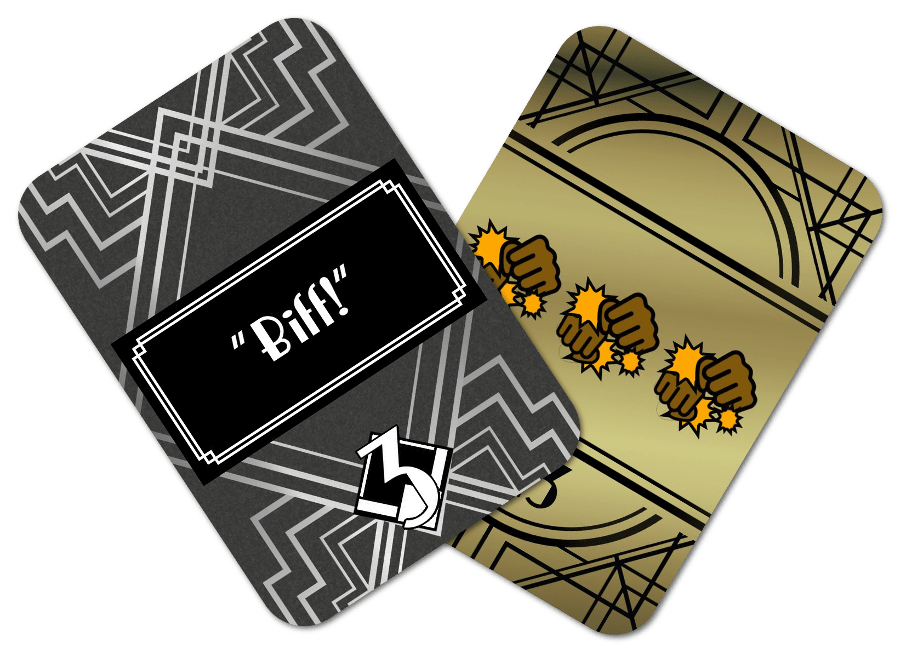
The basic mechanic of Chin Music is a bit like Snap. You lay down cards with sound effects on them, and list the sound effects in a row of the stack so far. Then, when you messed up, players flipped the stack over, checked how powerful the gang of hooligans outside you’d antagonised, and then you won or lost points based on that. Players could see the back of other players’ cards, so you’d know generally how dangerous the gang would be. The real-time aspect of the game is that the longer you take on your turn, the harder it gets to remember the stack of cards. You want to pass the turn as fast as possible just as a function of memory.
Here’s the problem: That second mechanic sucks for a game that wants to move fast, and it jerks the whole game to a halt when you need to check it. The mechanic that replaced it was much simpler: When you mess up, another player can call you out for it, and if you did mess up, you shuffle those cards and put them into your own deck. This meant that there needed to be a few more cards, and that meant the card backs needed to be cleaned up, and then since the deck got a bit bigger, I could put the game into a cardboard tuckbox (technology we didn’t really embrace fully until 2018). Overall, this means that early versions of Chin Music are, while perfectly functional, really not as good as the final versions of it, and that bums me out.
But I still put the first version up for sale, in a rush, because I didn’t want to miss making ‘a game a month.’ This was a bad decision, because if I’d postponed it a week or two, nobody would have really noticed. I’d have gotten the first version, found the problem, been willing to address it then, and just delayed the game.
This is one of the ways the printing time kicked me in the butt. My first prototypes of this game were made with playing cards and I found the awkwardness of the scoring system was – in my mind – tied more to my handwriting and the cheapness of the prototype than the actual problem in the game.
I wanted to release a game a month, and since I was doing it without a plan or a contingency, and doing it without clearly defined boundaries of what did or did not count as a release, or any way to recover from mistakes, I now have stock of a kinda-bad version of a game I really like. Let that be a lesson for you: If you’re going to do a project like mine, give yourself defined limits and boundaries, and ways to recognise and handle failure.
TvTropes Critique
As my month-long meditation on Voltron: Legendary Defenders slowly unspools, I’m reflecting on the kind of criticism that spurred me to write about it in the first place. It was all of a particular genre, a check-list and key-word driven style of critical engagement that I have long since had a beef with. I’ve taken to referring to it as TVtropes Critique.
Game Pile: DoraKone
DoraKone is a stretch goal kickstarter game that came out in December 2018. When I say it’s a stretch goal, it’s literally a throw-in made for the kickstarter of another, different game, by Apple Cider games. You follow a protagonist named Dulce as she plays an ARG Phone game for exactly one summer, and the people she meets because of it.
This game is an unabashedly self-indulgent, short, easy and breezy little game. There’s no ‘suddenly, you are dead’ in any of the routes I played through, and the game you get is pretty much just Cute Lesbians Start Dating, culminating in a big grand kiss graphic for your trouble. There’s multiple endings and conversation choices, you know, all the classical Visual Novel stuff.
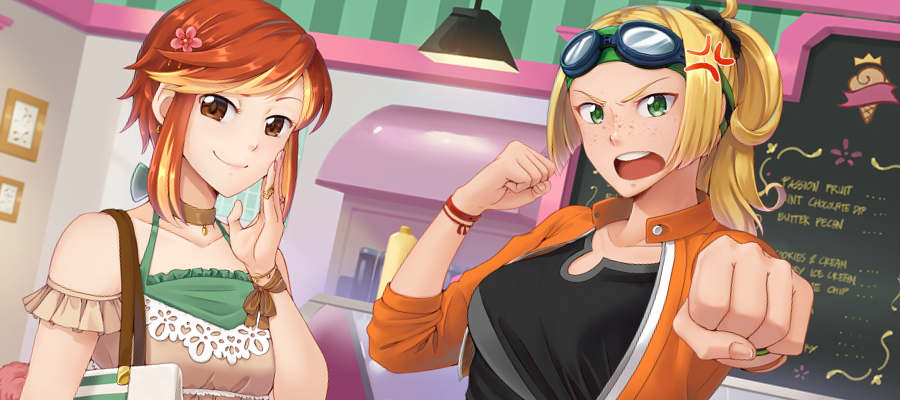
DoraKone is beautiful, just breathtakingly good looking as a visual novel goes. If you’re very familiar with how Renpy works, you know what to expect – the game never busts out a surprising mini game or asks you to do anything I’d consider ‘challenging.’ In the landscape of the modern English Language Visual Novel it’s a very pure, very approachable little nugget of Lesbians.
You can get DoraKone on itch.io for the low low price of No Dollars.
Battlemind Woes
At the time this post goes up, I will have already played this year’s Weekend D&D game. If things went as I expected, I’d have played a Battlemind, modelled on Gilgamesh from Fate: Grand Order, in that he’s a reckless garbage boy, a property-rights-confused wanna-be Hero of the Sands of a half-Gerudo.
This has meant looking at the class the Battlemind at some length, and let me tell ya, it ain’t great.
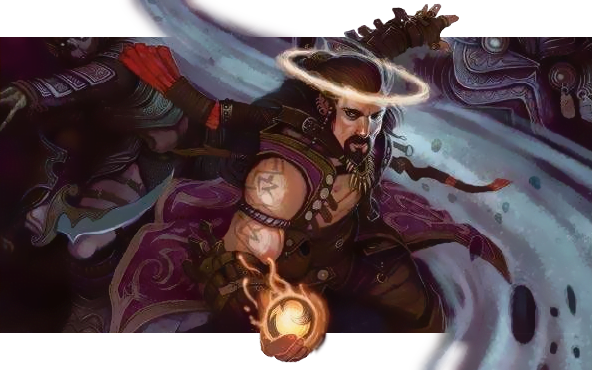
For those of you not familiar with 4th Edition D&D, here’s the basics: The Battlemind is a defender class, meaning that in combat, it wants to spend its time forcing enemies to prioritise it – it’s a form of control. The defender wants to make enemy actions as fruitless as possible by making those actions directing attacks at someone who can best handle it, and does this by being the toughest person on the field and then making it hard for enemies to attack other people.
Loving Complexly
This was my Grandmother’s birthday.
Medium Gender Left Content
Gender is a medium. Your gender is content.

There’s this book, Understanding Media, by this guy, Marshall McLuhan. This book is Media Studies 101, and I mean, literally. In almost all first-year media studies you’re going to see McLuhan get busted out and there’s a lot of stuff in this book that’s really good for understanding media, what it’s for, how it interfaces with us as people. There’s this phrase in the book, a phrase you’ll hear a lot in media studies, and if you’re Canadian, you’ve probably heard it here:
Now, this thankfully links easily to Dan Olson doing a very solid explainer. If you don’t understand the phrase, this is a good one. McLuhan’s theory is that mediums shape our world, more than the ideas presented than those mediums. In the 20th century, we had an explosion of mediums – mediums in this case being things like television, radio, cinema, cellphones and the internet, to name a small number of big examples. And examples like that are big and easy and obvious to look at because the 20th century was really explosive for this kind of thing.
There are however, older mediums, mediums that have deformed our world. And lots of mediums include those other mediums. Like, television is built on the structures of modern theatre, and modern theatre is built on the structures of pre-modern theatre and here at least, we use English as our language to talk on television, and English is a medium and that medium is built on the previous mediums of other languages and all the way back until people are poking things into cuneiform.
And one very old medium is gender. The modern gender system we have is built on an older one, probably one from the Victorian empire. That medium was spread in part because it gave those people in that empire a cohesive vision for their own selves, which in turn facilitated their dehumanisation of the other, and that made it easier for them to justify things like massacres and genocides.
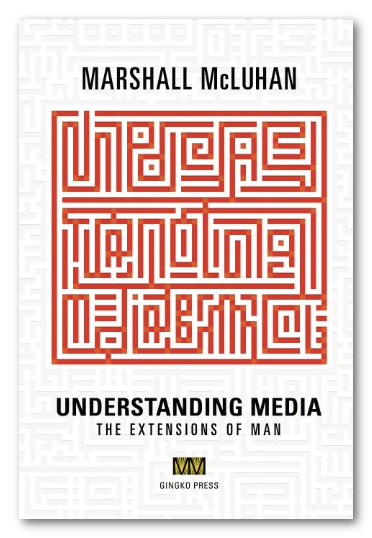
Yeah, Victorian Gender Roles are dead set part of the mindset that enabled mass extermination. Not kidding. Racism was part of it, as was exploitative capitalism, all that stuff!
The thing is, gender does a lot to deform our society, but it does it in the same way television or mobile phones do. We have two separate bathrooms in public spaces (usually), but we have it that way because we have gender, not because genders mandate different bathrooms. Pockets in clothing are the way they are because we want to enforce gender, not because genders change the way pockets work.
Thing is, gender is a medium. Not maleness and femaleness. Genders. All genders – the entire idea of there being a thing called gender, which brings with it certain inherent, inalienable traits, that’s the medium. The genders of male and female, they’re much more like genres within that medium.
That means that you’re free to view your own relationship to that medium, and choose how it belongs there.
Story Pile: Ouran High School Host Club
Ouran High School Host Club is a self-aware, postmodern romantic comedy shoujou anime series. It follows a gormless poor protagonist, Haruhi, interacting with the ridiculous wealth of the prestigious Ouran academy. In the first episode, Haruhi incurs an enormous debt that has to be repaid, and the only path presented for that is to work in the needlessly ostenstatious and 100% ridiculous Extremely G-Rated Host Club.
A Host Club in this case, for anyone unfamiliar with the real-world thing, is basically a bar with hot boys, and those hot boys are paid a significant percentage of the bar’s proceeds selling expensive drinks. This means these boys are incentivised to convince you to buy a lot of really expensive drinks and spend a lot of time there. It’s not actually sex work, but it is not uncommon for hosts to have sex with clients they like off-the-clock. It’s actually kind of a point in its favour that as sex work goes, the Host often has a lot of freedom to refuse clients because sex isn’t actually part of the deal.
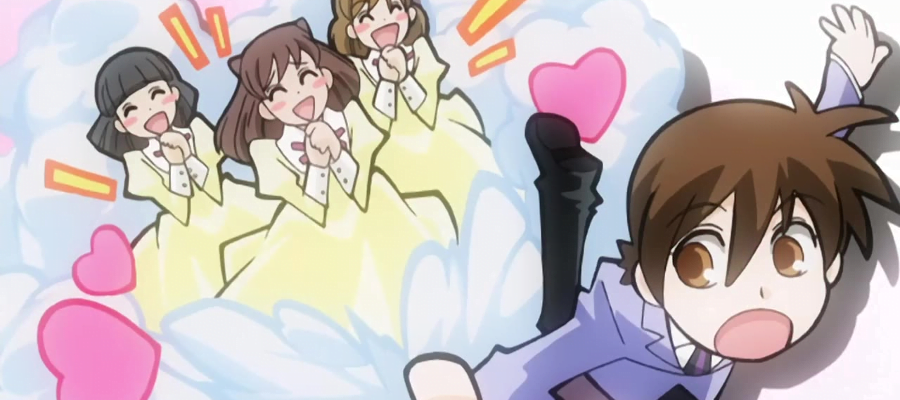
In Ouran, perhaps because everyone involved is just ridiculously wealthy and alienated from the very idea of paying for things, these hosts operate on a much more sincere idea that they’re literally just there to make the guests feel happy, like, for its own sake. There’s a good article’s worth of content there about the idea of the wealthy being so alienated from labor they make labor into performative play, but not here.
This vision of a Host club is sweet, and extremely ridiculous and it plays into one of the themes of the series: Rich people are flipping nitwits.
Smooch content wise: This series lacks for many actual smooches but is full of teasing towards smooches. If you want to see if Haruhi winds up with one of the boys (or even the occasional girl), the series is full of testing and teasing on that front. If you like these characters, if you find the style of it fun, this is a good romantic comedy because the question of Haruhi and smooching is just always there, always ready to leap out and raise the stakes on any given situation. I like this series, and you might like it too.
I don’t intend to get spoilery, but there will be a content warning for stuff in the series, later.
Examining Murder Of Crows
If you’re bothered by seeing designers scrutinise other designer’s designs explicitly to change them then you might want to check out now. I personally advocate for this practice very hard, since it’s both important to demistify the lie that games spring out of the aether, but I know that some people are both more precious and more sensitive to the idea of ‘idea theft.’ Since I put a ton of my design work out there on this blog, you can probably guess that I don’t have that same fear.
In the simplest sense, what I’m doing here is play. I am playing with this game, with its design. It is more akin to the play of a gear than to the play of an actor, but it is still play.
On the other hand, I’ve spoken to one of these designers, Eduardo Baraf, he’s a lovely guy and I don’t want to make him feel bad. This is an examination of how to make a different game idea out of one of his ideas, it’s not about things he ‘should’ have done, or things that he should have presciently known better about.
Onward!
Vastaanan, Hero Of The Desert!
It’s D&D weekend! It’s a weekend where we play a single D&D game, with friends who we don’t get to see except once a year! It’s great! It’s fun! It’s 4th edition D&D, and as I write this, it’s still in the future. As you read it, it should be happening, for me, like, right now, The continuity of this potential game is a bit weird, and that’s appropriate, because, in the interest of getting a good, solid hit-the-ground-running game setting, Fox decided to run her weekend-long sword-and-sorcery adventure in The Legend of Zelda.
Game Pile: Hustle Cat
Hustle Cat is a 2016 Visual Novel by Date Nighto, which might normally get put in the ‘otome’ game category, except it’s kind of deliberately not using that particular trope set. The story follows Avery Grey, a pronouns-of-your-choice (they for this review) human form that, as seems to be a trend so far, interrupts their life of Not Doing Anything at home by getting a job at a cat cafe. This cafe is staffed entirely by painfully cute people, and you wind up smooching one of them (or dead, or worse).
Did I say dead? Don’t worry about it.
As with most games of its type, talking about plot specifics would involve digging into narrative spoilers, which I’m normally happy to do, but in the case of a Visual Novel is pretty much the content you turned up for.
You can get Hustle Cat on itch.io and Steam. It’s a more expensive title here in Australia – $30, and the US price is $20. This puts it in the higher price bracket of visual novels, comparable to a Danganronpa game, which have voice acting, animation and mini-games. Without those other ‘game’ bits to recommend them, Hustle Cat offers itself to you as a very pure experience of here are hot characters, you can smooch them.
Some folk like Visual Novels because being a fan of Visual Novels is cheap. There’s a bunch of good free ones, there’s a few that are good and cheap, and there are some – very few – that actually crest into this space. For me, the VN has always been an entity of the affordable, and that means part of me recoils at paying that much for it. What if I don’t like it? the fear creeps in the back of my mind. Visual Novels, more than other games don’t have much to engage you except characters and story, and that means that this not-small purchase has to live or die on whether or not those are good.
With that in mind, I’d like to tell you why Hustle Cat is really good.
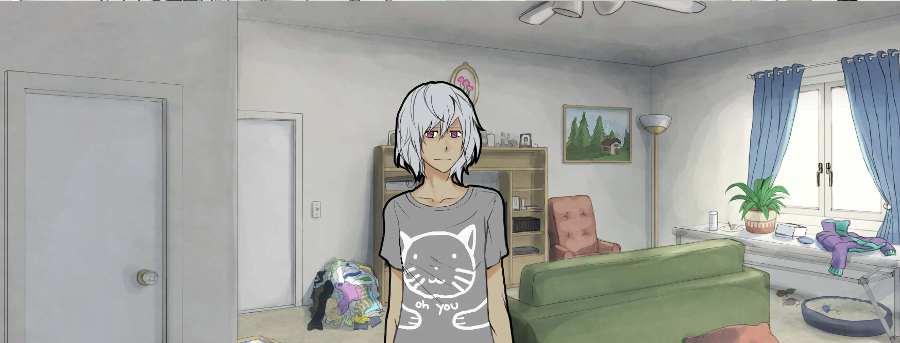
Hustle Cat sets its tone clearly when it lets you pick your pronouns – and even tells you that you can change them any time you want. It allows for he/him, she/her, and they/them, but it also doesn’t actually attach a gender to that – characters never call you a girl, or a boy. You can be an enby who uses he/him or a girl who uses they/them. This is due to some awareness in the planning stages, and it serves the game well.
Continue Reading →Project: You All Meet In An Inn
The Pitch: You’re playing a quest-giver at a local tavern, trying to make sure you hand your quests to the idiots most likely to succeed at it. You’re not the only one, though, and all the other players are vying to lure these adventurers on their particular quests, like a sort of ambulatory workboard. You need to pull together adventurers, earn coin to incentivise more parties, and hopefully get your own ends met by the end of the game.
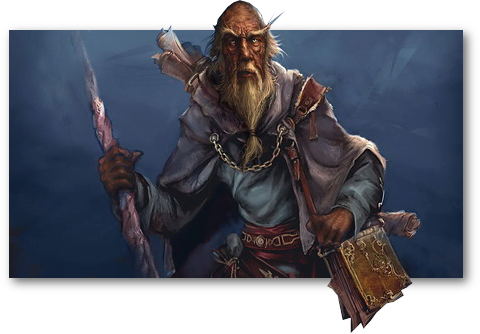
Details
You get a bunch of cards known as Quest Cards. Those Quest cards have some flavour on them, and then a set of symbols indicating what they need to be completed, and maybe have marks on them indicating things they ban (like maybe the quest to seduce the necromancer bans all ‘holy’ characters).
Those quest symbols are also on the Adventurers cards. These cards indicate the kind of thing they can do, and have a card back indicating if that adventurer is amenable to questing alone, in a pair, or as a full party. They’re arranged in a grid of three rows, like so.
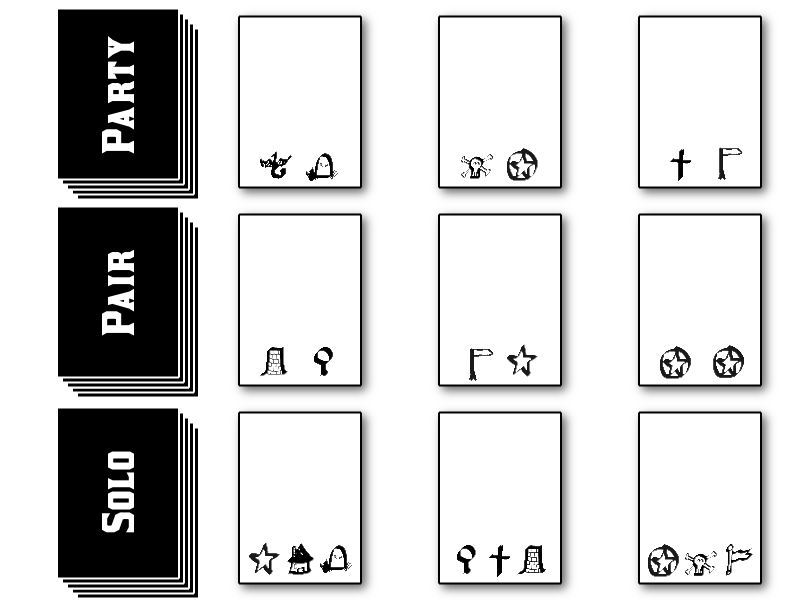
When you use a quest card, the adventurer (or adventurers) head out, and sit on that quest until … some timer. Not sure. Whatever. It’s a turn-based game. When they finish the quest, they return to the bottom of the deck they came from, and you get some fraction of the rewards and quest objectives. You can spend the reward money (hey, you think quest-givers are giving you everything your work earns them) to add to other quests, which means other adventurers are more likely to get them.
This whole game is modelled on Splendour; the grid arrangement, and the sort of economy of opportunities. There may be something like Splendour’s investments, too – maybe some of your quests make all your quests later easier because you have a reputation to uphold.
Needs
This game is going to need art. Since I now have a fund of sorts from Patreon I’ve been considering comissioning a bunch of adventurer art, of characters hanging around in an inn, but there’s an added challenge here: I don’t think I have it in me to design some 100+ characters, let alone give them enough to be meaningfully personable without using things like templates.
This has me considering maybe running a kickstarter with a cheap tier that’s just ‘we make your OC into a card and you get a nice high-quality copy of the art.’ I dunno.
At this point the volume of cards has me wondering if it needs to be a tight small-box 120 card game (as I make on Drivethrucards) or if this wants to graduate to be the next big thing as a small-box game that comes with tokens and markers.
If you think this sounds cool, if you think you’d want to chip in for art of your character, or if you’d back it on kickstarter, encourage me, dangit. I don’t know what I should be doing.
To Own With Your Eyes
One of the things patriarchy teaches men is that they own, in a way, what they look at. It also teaches non-men that that they are, in part, owned by being looked at.

Simple little lesson. Simple little idea. Advertising to men often just shows them things and the natural intuition is that they’re entitled to it. Women are shown things with an explanation for what’s wrong with them and why they need to get them.
This idea is part of why there’s not really a structural comparison between the male gaze and female gaze. The thing is, The Male Gaze is the default structure, an observable trend that comes about not because a bunch of dudes looked at a textbook for Male Gaziness, but because men, given control and means to, did things, and afterwards, people observing that work were able to find a really clear, consistant pattern.
It was a byproduct of giving guiding control of a medium to mostly a single gender for generations. And it grew in part out of that same starting mindset: The idea that you were entitled to the things you looked at.
In the Bible there’s this passage:
27 Ye have heard that it was said by them of old time, Thou shalt not commit adultery:
28 But I say unto you, That whosoever looketh on a woman to lust after her hath committed adultery with her already in his heart.
This passage has been used heavily to talk about the dangers of lust as an action. It’s one of the times the Bible weighs in about whether sins are things you do to people or objects, or if they can happen in your mind. Which, well, the Bible is pretty clear, yes, they can. If you think it, you did it, and adultery isn’t just about bodies and grinding, it’s also about the mere capacity to want it.
Which makes a kind of sense, if looking at something is an action of power.
It makes sense if you own the things you look at.
Pokemon Badges
Hey, did you see my On My Way To Victory Road shirt design? That was built around little window views of my renditions of the Indigo league badges. In order to make that design, rather than use anyone else’s art, I remade all those badges myself – these are digital drawings of the original art.
Anyway, you might want bigger versions of those artworks for some reason, and hey, here, you can have them. These badges might make fun designs you can use on forum signatures or whatever.
Story Pile: 10 Things I Hate About You
Okay.
Okay.
Before we get started, this movie is basically a book report for my generation. Like, this is a movie that a lot of English teachers (not mine, mine weren’t cool) let the students watch so they could do a comparison between the texts and maybe just once, just once get the students to give a damn about Shakespeare. That means that to me, I feel like 10 Things I Hate About You is probably almost boringly well-known.
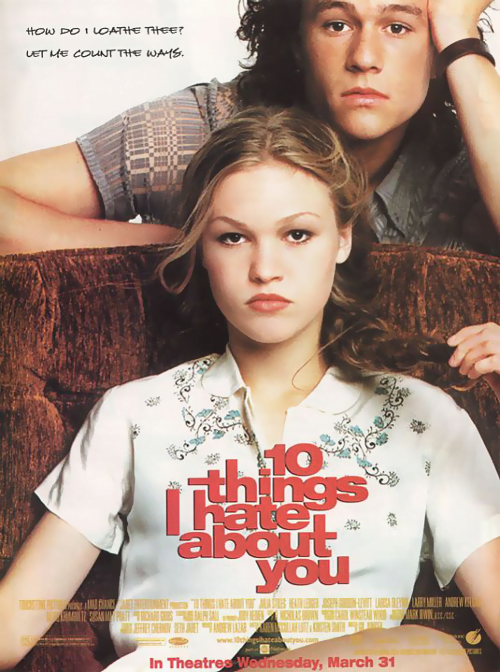
Right?
I’m not about to tell you anything about this movie you don’t already know, except that I like it and also the soundtrack is really good. Still, let’s hit the basic beats:
- It’s a teen romance movie from the 90s
- It’s almost the most teen romance movie from the 90s
- The story is a re-framing of The Taming of the Shrew by Shakespeare
- The Taming of the Shrew is super gross
- But 10 Things fixes a lot of things?
- And includes a passage about updating Shakespeare?
- But 10 Things fixes a lot of things?
- The Taming of the Shrew is super gross
- 10 Things I Hate About You was a breakout movie that introduced the world to:
- Heath Ledger, aka the Joker, tragically gone
- Julia Stiles, aka … Julia Stiles in this
- Joseph Gordon Levitt, aka everything
- Larisa Oleynik, who every Alex Mack fan already knew
- It’s super dated!
- Like, painfully so!
- The Shakespearean behaviour of the Dad is really weird in a modern concept
- There’s a dance number, for no good reason!
- The soundtrack is really good
Okay, I think that’s everything Lindsay Ellis covered when she talked about it, and that’s the critical background I have to work with, after all. We good? Okay, let’s go.
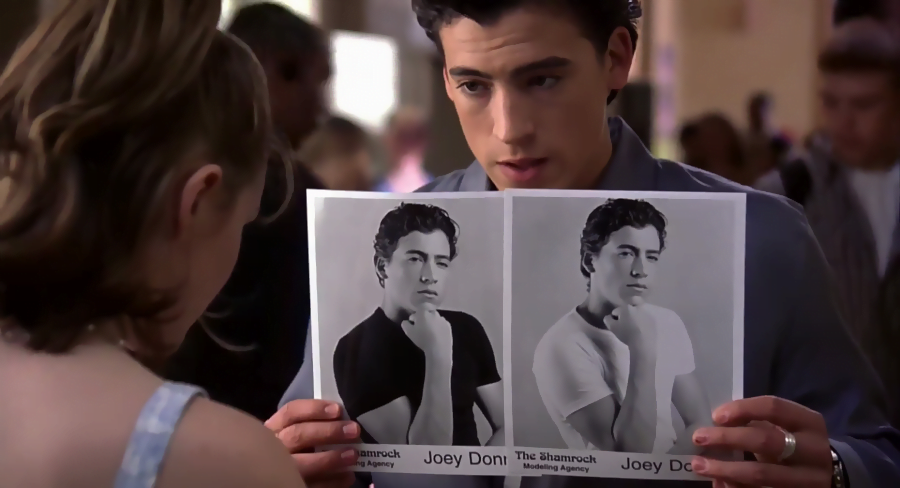
Smooching In Non-Smoochy Games
I play tabletop RPGs, and I tend to play them with a flavour of a sort of high-impact pulp fantasy. These are stories inspired in no small part by anime, mostly anime that are themselves inspired by the JRPG genre.
Now, JRPGs are character-driven; they tend not to want to represent a sort of agnostic world. Most western RPGs, and most tabletop RPGs that like that feel, are trying to present a world that simply is the way it always was – your characters, your people don’t matter that much to the world until you start engaging with it. This means that it tends to be more common to see games and settings where characters have their own lives that they want to get back to, and that means that it’s not so common to see characters you can romance.
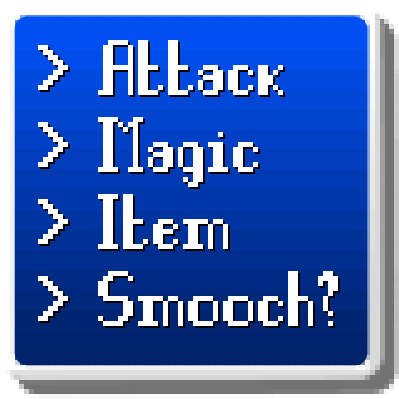
The tabletop games we tend to play then are games which work in the opposite genre; the plot is in some ways structured around our characters; we’re known by important characters, or locations have some reason to resonate with our characters. My Paladin, for example, will almost always go out of his way to free a slave or punish a torturer, which may sound like it’s basic Paladinning, but in his case it’s definitely above and beyond, and it comes from a personal place.
I also really like smooching in plots.
I like that sort of general non-specific characters-romancing-characters. It’s just something I really like in a plot. On the other hand, I am also super shy, so I don’t often actually get to do romances – certainly not anywhere prominent. In some cases, I have elaborate headcanons about my characters and the NPCs they wound up smooching, just, you know, in private and it’s not anything anyone else has to deal with.
Now, it’s not a shock that many other gamers are awkward, and when you hear the phrase romanced an NPC odds are good you have a flashing warning sign in your mind going oh God no please no.
I just wanted to share my general ideas about how to handle this, as a player who wants to romance characters, both player and nonplayer.
- Read the Room. Lots of people at the table may not be interested in watching your character flirt with another character or an NPC. It may be that they really do like watching the cool or funny or entertaining bits and you can play those out. Remember in these situations, romance is often a thing that makes you the centerpiece of attention, and in those times you’re not just satisfying yourself, you’re entertaining the group. And also be respectful of their time in general, and themes they don’t wanna see happening.
- Make it Convenient. Don’t interrupt important things for your romantic thing. Ask your DM or the other player if you can work out a conversation later. This ties into the first thing. If you can’t think of the cool line or the perfect moment, then just say ‘I’ll work it out later’ or maybe even ‘I said something cool, let’s move on.’ This may be less satisfying than perfection, but you don’t want to make everyone wait for you to workshop your flirts.
- Avoid The Rules. Know what kills a romantic conversation real fast? Looking up rules in a book. If you want to try something that would work for a scene, if it’s not going to get you game mechanical advantages, just pitch it to the DM in terms of it works for the scene. Maybe your character does zippo tricks or helps someone walk along a lovely mossy log – ask your DM if you can just skip dice rolls and avoid talking about Acrobatics or Tumble checks at that point.
This isn’t to say this is a system that Gets You The NPC or PC you have your heart set on. These are just the rules I use to make sure that when I play romantic moments in games, I’m doing it in a respectful way that keeps other players from being bored or bothered.
February is… Smooch Month!
Smooches are pretty cool.
They’re not a universal positive; not everyone is pro-smooch, and not everyone is interested in smooching media.
It used to be that there were two things I had to remember in February: Valentines’ Day, and my grandmother’s birthday, the day beforehand. But Fox and I don’t really do Valentines’ day, and my grandmother passed away last year, which means that now, for me, February is a sort of nonspecific month of romance.
I was tempted to do a silly ‘romantic universes’ themed month, and maybe you’ll see that come up (that’s a teaser, folks). Still, I considered whether or not I should check out my lineup of loved media, of games I’d been meaning to play, to see if I could see a thread of games or media about people doin’ smooches in a fun and sexy way, and I was kinda despairing to notice that I largely did not. In fact, of my very small collection of Actually Bought Permanent Media (like, DVDs and stuff), I owned almost nothing you could consider a proper romantic movie or series.
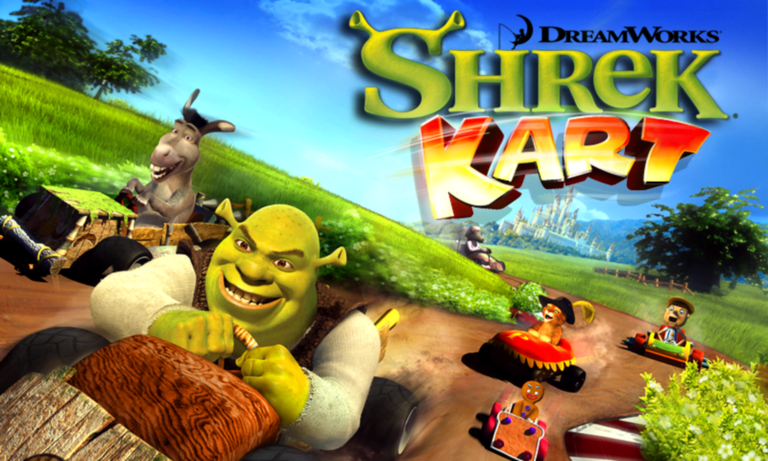
That seemed, to me, like a fine time to take the bull by the horny. This February, we’re going to talk about games and media that falls under the broad common heading of romances. And no silly buggers: I’m not going to cover Shrek Cart and talk about it in the context of how it’s technically about a romance because Fiona existed in a movie.
Buckle up! You’re going to get to see an awkward bisexual dude with a wonky dating history talk about games and shows with cute people in them, and the Vicarious Smooch-Want those media are going to try and instil in us.
Game Pile: The Blind Griffin
The Blind Griffin is a NanoReNo game from 2015, an otome game set in a fantasic version of 1920s America, made by Asphodel Quartet. The story follows ????, a nameable protagonist as she follows magical signs that pull her towards a convenient job at a speakeasy called The Blind Griffin. There, she gets a job as a bartender, meets a trio of boys as well as some lovely ladies, and gets to spend a few months learning about magic, history, love, and whether or not she wants to smooch someone.
Telling you about deep specifics in this game would be a bit tricky, because it really is quite short. Like, action movie short. Like, an episode of a drama short. You could probably blur through your first playthrough in an hour if you weren’t taking notes like I was and then replay it again doing different things in half that time. With that in mind, you’re not going to get a lot of spoilery stuff in this review – there just isn’t the time.
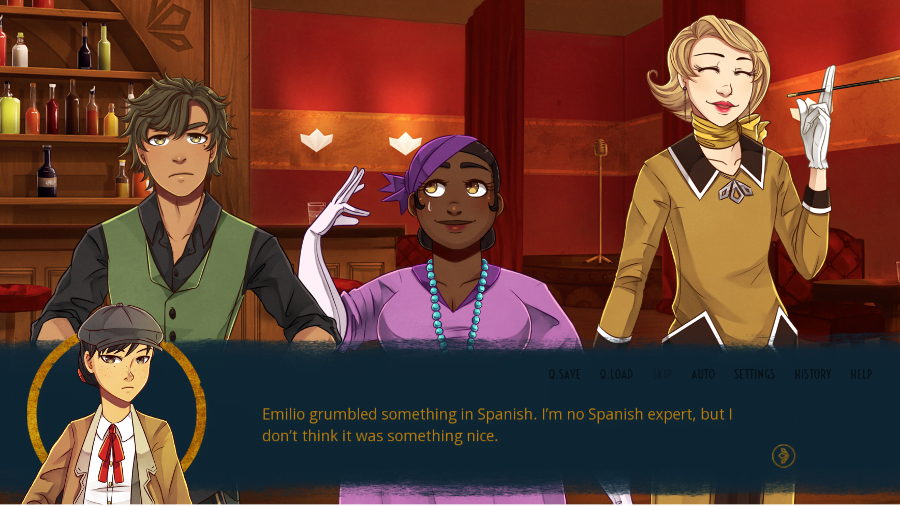
You can get The Blind Griffin for free on itch.io, and it’s definitely worth the time to play through. There’s no need to be particularly specific about it – this is a good little game.
But now, let’s talk about form.






